Mr. Tiep's deer farm in Tan Ha ward, Tuyen Quang city (Tuyen Quang province) sells velvet and breeding deer. Male deer raised for velvet start giving velvet at 2 years old, the amount of velvet cut for the first time is only 100-200 grams/deer. A mature deer can yield about 0.8-1 kg/deer in 1 year, if well cared for and the male deer is cut velvet twice a year.
The model of raising spotted deer for antlers and selling the offspring is no longer strange to people in Tuyen Quang province, typically the family of Mr. Quan Van Tiep, born in 1975, residing in Group 2, Tan Ha ward, Tuyen Quang city, Tuyen Quang province.
Every year, Mr. Quan Van Tiep's family earns more than 400 million VND from raising deer for antlers and selling deer breeds.
When entering the 350 m2 deer barn of Mr. Tiep's house, we will see a very scientifically designed barn system with the barns built in rows, to facilitate the care of deer as well as separating and changing barns.
Each pen is 2 x 2.2 m in size; 1.5 m high, made of wood to avoid injury to the deer. There are also 2 large pens, each 80 m2 wide, to keep the female deer and the fawn when separated from the mother.
All of his pens are designed with automatic drinking water systems, the floor of the pen is made of dirt and uses biological bedding to treat manure and prevent the deer from running and jumping and an automatic sprinkler system is installed on the roof to cool the pen in hot weather.
Just looking at it is enough to know that the deer farm owner is passionate and dedicated to deer.
When asked about the process of starting a business, Mr. Tiep shared: On a business trip to Ha Tinh province, he visited a deer farm. At that time, no one in Tuyen Quang province raised deer in cages.
Therefore, in 2009, he decided to buy 03 deer (01 male, 02 females) at Huong Son deer farm, Ha Tinh province to raise on a trial basis. Due to lack of capital to invest, he decided to sell his Wave Alpha motorbike - the family's only means of transportation and borrow more money from relatives to buy deer to raise.
At first, he encountered many difficulties because he had no practical experience in raising deer. When he brought the deer home to raise, they all had diarrhea, bloating and stunted growth. He went to deer farms in other provinces to learn from experience and get medicine to treat them.
After 1 year of raising, he understood the habits as well as the care process so the deer grew healthily. In 2010, he bought 7 more deer to raise to expand the herd, at one point his herd grew to 70 deer.
After a period of effective and stable raising, in 2017 he quit his job at Tuyen Quang Forestry Company to stay home to take care of deer and provide advice and support to households in need of raising deer.

The breeding area for female deer of Mr. Quan Van Tiep's family, a former forestry engineer. The model of raising sika deer to sell antlers and deer breeds of Mr. Tiep's family in Tan Ha ward, Tuyen Quang city, Tuyen Quang province.
Mr. Tiep shared more about his experience of raising deer, which is not difficult but requires attention: Deer food is mainly vegetables, fruits and leaves; it is necessary to regularly change the types of food, ensuring it is delicious to avoid deer getting bored of eating.
During the antler growth stage, deer need to be fed with starch such as corn, rice, and cassava to increase nutrition, improve health, and gain weight. To help deer grow well and stay healthy, it is important to focus on clean food sources.
When feeding deer, you have to pay attention to see if the leaves have leaf rollers or worm eggs. If the deer eat these things, they are very susceptible to bloating and diarrhea. When the deer has diarrhea, he often feeds them jackfruit leaves, bananas and reduces starch; if they have bloating, he feeds them crushed garlic; if they have pneumonia, he injects them with medicine.
Common diseases in deer are mainly diarrhea and bloating, just need to adjust the deer's food.
The water source must be safe and clean. In the summer, deer need to be provided with 6 - 8 liters/head/day, in the winter they need 4 - 6 liters/head/day, so in the summer the water system in his deer pen is open all day; in the winter it is opened at noon so that the deer can actively drink water themselves.
To ensure a fresh, safe food source without pesticides, his family has renovated 1.0 hectare of land to grow elephant grass, biomass corn and banana trees to use leaves as daily food.
In addition, around his farm, he also grows jackfruit trees to get leaves to feed deer in the winter when there is a lack of grass. With 15 years of experience raising deer, Mr. Tiep's farm has become a reputable address for providing breeding animals and technical advice.
Many households in Thai Nguyen, Phu Tho, Lai Chau, Yen Bai and Hanoi provinces have imported deer breeds from him and he has enthusiastically delivered the breeds to their homes, consulted and instructed them on technical procedures on how to build cages, make floors to apply biological bedding, and how to care for, clean, and prevent diseases for deer, and care techniques to ensure that deer grow and develop well with few diseases.
Mr. Tiep's family's deer farm mainly exploits velvet and sells breeding deer. Male deer raised for velvet start harvesting velvet at 2 years old, the amount of velvet harvested for the first time is only about 100-200 grams/animal, a mature deer can harvest about 0.8-1 kg/animal in 1 year, if well cared for and the male deer has its velvet cut twice a year.
The amount of velvet harvested is proportional to the age and weight of the deer, so the older the deer is, the more velvet will be harvested. The time from new velvet growth to cutting is 45 days when the velvet has enough nutrition, do not let it get too old or it will lose value.
The price of antlers sold on the market is 2 million VND/tael. For breeding deer, he sells them when they are 4-5 months old, the price of female breeding deer is 13 million VND/head; male breeding deer is 15 million VND/head. The main consumers of antlers are local people, visitors buying them as gifts and restaurants.
Currently, his farm has a total of more than 40 deer, of which 17 are male deer for antler exploitation, the rest are breeding female deer and fawns.
Each year, he collects nearly 20 kg of velvet and sells more than 30 deer. After deducting all expenses, the deer herd brings in a profit of more than 400 million VND. In the near future, his family plans to open a store to introduce velvet products to customers.
Mr. Tiep's deer farming model has created regular jobs for 4 workers with a salary of 6 million VND/person/month. Along with raising deer, his family takes advantage of the pond area of nearly 3,000 m2 to raise fish and Minh Huong ducks, each batch raises 1,000 ducks, each year raises 4 batches, earning a profit of more than 100 million VND/year.
Mr. Nguyen Manh Cuong, Chairman of Tan Ha Ward People's Committee (Tuyen Quang City, Tuyen Quang Province) said: The deer farming model of Mr. Quan Van Tiep's family is an effective model, bringing high income to the family.
As a good example of production workers that everyone learns from and follows, Mr. Tiep is also willing to share knowledge, experience, and techniques for caring for and preventing diseases in deer. Hopefully, in the future, more and more effective economic models will be replicated, bringing stable income, contributing to improving the lives of people in the area.
Source: https://danviet.vn/huou-sao-con-thu-moc-thu-dai-bo-tren-dau-la-dong-vat-hoang-da-nuoi-o-tuyen-quang-dan-giau-han-20241031154202137.htm



![[Photo] Prime Minister Pham Minh Chinh and Prime Minister of the Kingdom of Thailand Paetongtarn Shinawatra attend the Vietnam-Thailand Business Forum 2025](https://vphoto.vietnam.vn/thumb/1200x675/vietnam/resource/IMAGE/2025/5/16/1cdfce54d25c48a68ae6fb9204f2171a)




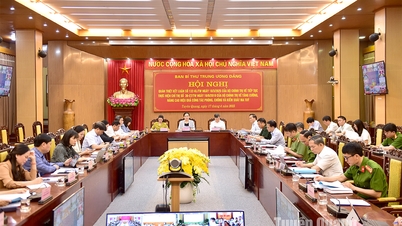






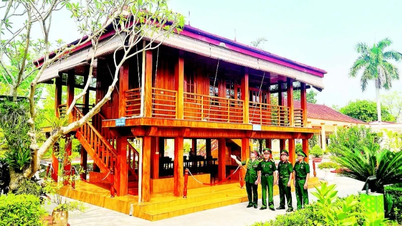

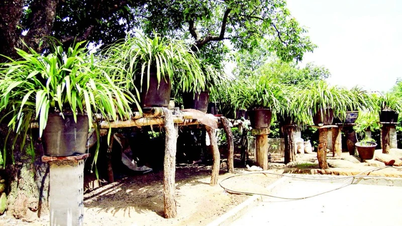
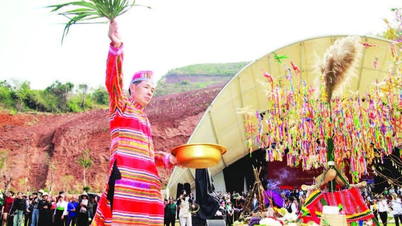
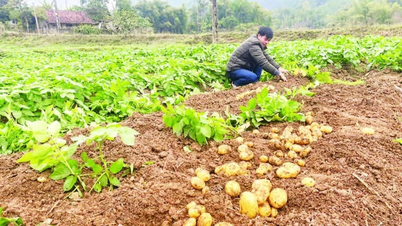
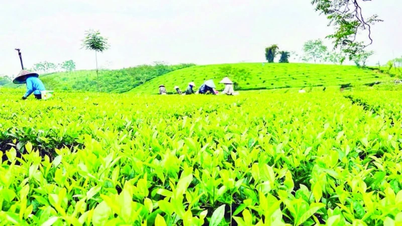
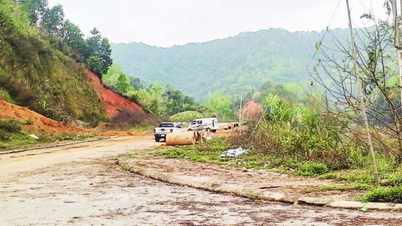







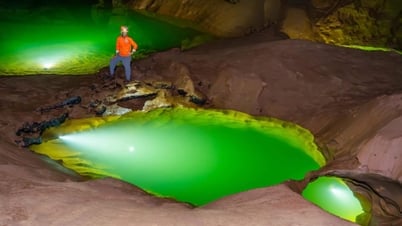
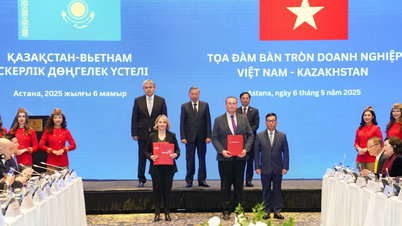

![[Photo] President Luong Cuong receives Prime Minister of the Kingdom of Thailand Paetongtarn Shinawatra](https://vphoto.vietnam.vn/thumb/1200x675/vietnam/resource/IMAGE/2025/5/16/52c73b27198a4e12bd6a903d1c218846)















































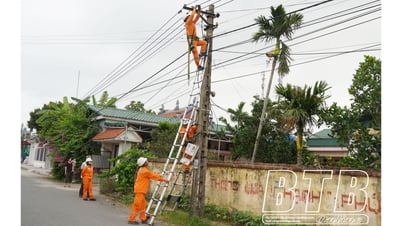
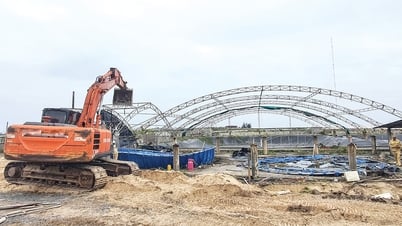













Comment (0)